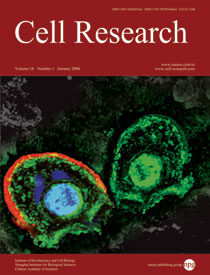
Volume 16, No 1, Jan 2006
ISSN: 1001-0602
EISSN: 1748-7838 2018
impact factor 17.848*
(Clarivate Analytics, 2019)
Volume 16 Issue 1, January 2006: 45-54
REVIEWS
The role of NBS1 in DNA double strand break repair, telomere stability, and cell cycle checkpoint control
Ying Zhang1, Junqing Zhou1, Chang UK Lim2
1Department of Environmental and Radiological Health Science, Colorado State University, Fort Collins, Colorado 80523, USA;
2Cancer Center, Ordway Research Institute, Albany, New York 12208, USA
Correspondence: Ying Zhang(Ying.Zhang@colostate.edu)
The genomes of eukaryotic cells are under continuous assault by environmental agents and endogenous metabolic byproducts. Damage induced in DNA usually leads to a cascade of cellular events, the DNA damage response. Failure of the DNA damage response can lead to development of malignancy by reducing the efficiency and fidelity of DNA repair. The NBS1 protein is a component of the MRE11/RAD50/NBS1 complex (MRN) that plays a critical role in the cellular response to DNA damage and the maintenance of chromosomal integrity. Mutations in the NBS1 gene are responsible for Nijmegen breakage syndrome (NBS), a hereditary disorder that imparts an increased predisposition to development of malignancy. The phenotypic characteristics of cells isolated from NBS patients point to a deficiency in the repair of DNA double strand breaks. Here, we review the current knowledge of the role of NBS1 in the DNA damage response. Emphasis is placed on the role of NBS1 in the DNA double strand repair, modulation of the DNA damage sensing and signaling, cell cycle checkpoint control and maintenance of telomere stability.
Cell Research (2006) 16:45-54. doi:10.1038/sj.cr.7310007; published online 16 January 2006
FULL TEXT | PDF
Browse 2045


